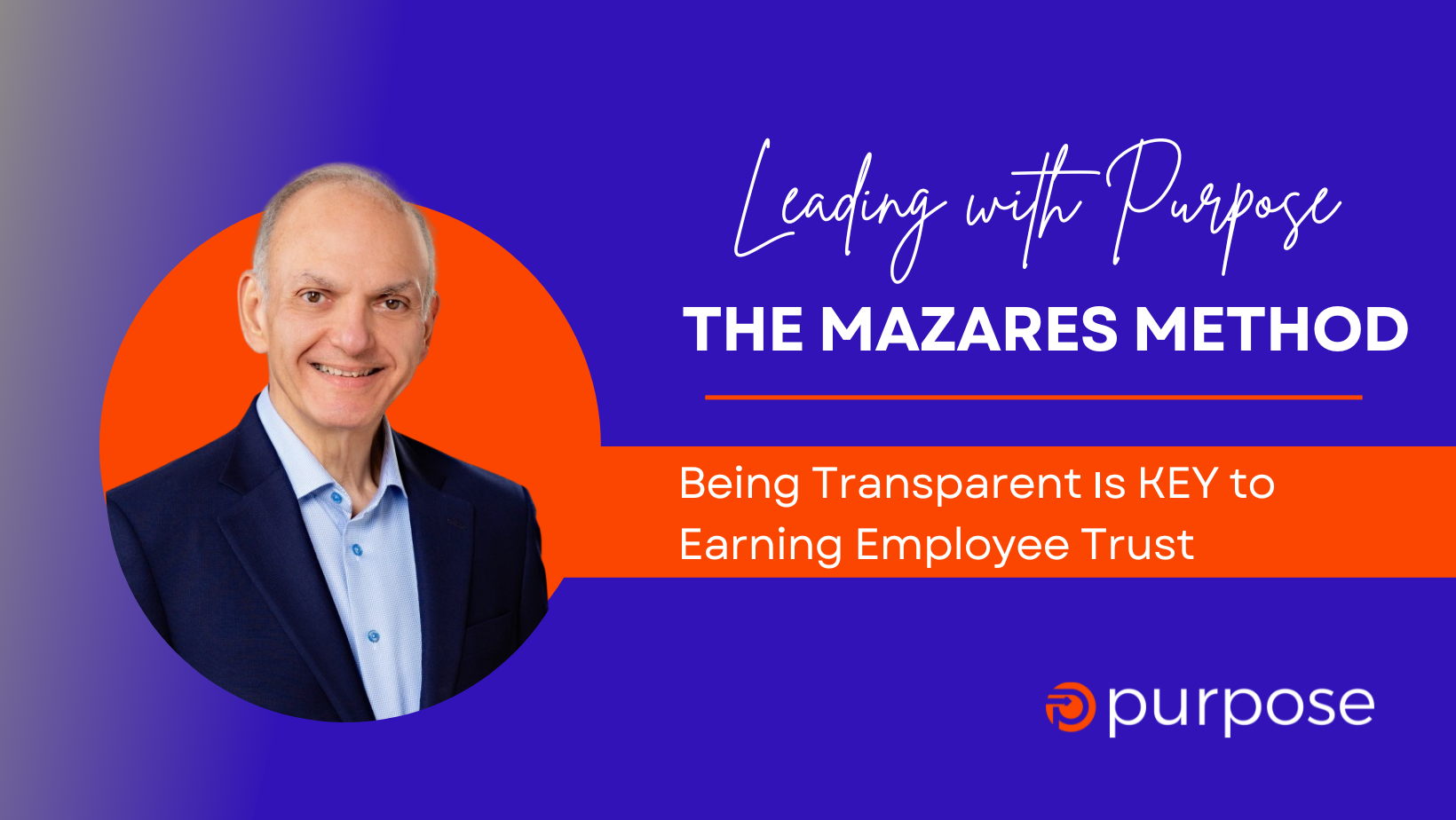By: Greg Mazares, CEO
Rather listen than read? Play the audio below
Through the years as a general manager, I have learned that people I proudly lead don’t care where I went to school, where I used to work, or how much I (think I) know.
What they want to feel with certainty is that I care about them and that they can trust me. Trust is all about doing what I say I am going to do.
But how do you EARN the trust of your team members?
While there is no easy solution, the place to start is to be transparent with them. To the extent you can, be open and be real. The legendary CEO of General Electric, Jack Welch, said: “Trust happens when leaders are transparent.”
Being transparent is very doable most of the time. But there will be instances when you simply can’t disclose certain information about your company or individual employees, clients, partners, or suppliers. In those cases, you can be transparent about why you can’t be transparent.
Think of transparency as being forthright, openly stating your opinions, and being a direct, “straight shooter.” In a fair, caring, and dignified way. Provided you do this consistently, transparency helps build long-lasting relationships. Be approachable. You want your employees to respect you, not be afraid of you or dread seeing you.
Another great aspect of your transparency is that it can breed broad “organizational transparency” and, if you wish, it can become part of your company’s culture. Leaders who are seen expressing honest opinions and demonstrating that “caring candor” is acceptable permit others within their organization to do the same things.
To help increase transparency and elevate your staff’s trust in yourself and your company more broadly, consider the following:
- Consistency is key: communicate in the same way to different people, or risk damaging your credibility
- Share your reasoning: outline the reasons behind your decisions to the extent you can. This helps your team to understand HOW and WHY you think as well as WHAT you think.
- Risk asking for feedback: ask others to help you and give you insights about yourself you wouldn’t otherwise receive (or don’t wish to hear or believe). Then, at the appropriate time, act upon the feedback, demonstrating that you are listening and also “coachable.” Imagine, senior business leaders don’t know everything and they make mistakes, too!
- Communicate openly: express your beliefs and share your thinking even when your message might be difficult for others to hear
- Spread the good word: teach your staff and colleagues that they may also (professionally) tell it as they see it, without retribution. You also should be willing to admit when a situation wasn’t addressed properly or as openly as it could have been
- Recognize that transparency also has limitations: again, there are many times when total transparency is simply not possible. Managers deal with confidential and sensitive information. Knowing what you should NOT disclose is equally important
Let me close with some words of wisdom from Starbucks founder Howard Schultz about the great importance of transparency for business leaders: “I think the currency of leadership is transparency. You’ve got to be truthful. I don’t think you should be vulnerable every day, but there are moments where you’ve got to share your soul and conscience with people and show them who you are, and not be afraid of it.”



